For many residents of the middle strip growing peach - Exceptful task, because due to regular frosts in winter, most of the shoots are freezing. What to do? How to grow peach in the middle lane, how to protect the peach correctly, so that he survive the cold in winter? And what kind of pruning, so that the tree is regularly fruitful? We will answer these questions. The next method of sheltering a peach surprised many, since everyone heard that in the middle lane, it is very difficult to grow peaches, perhaps this is done only with the shelter.
Photo 1. The turn of observer peaches grown in the middle lane of Russia
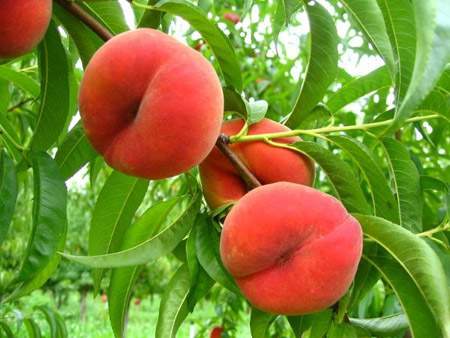
To obtain a stable crop peach in the conditions of the middle strip for the winter, it is necessary to stream. Fruit kidney Peach withstand frost to -27 C. If the temperature drops below, the kidneys are frozen and there will be no spring flowering. Wood withstands up to -35 s, but still better not to risk, because it is easy to cover the peach.
Before the shelter, peach must be burned to the ground as low as possible. The lower you cherish, the fewer materials and strength you spend on the shelter. We are adjusting the peach after the leaf fall, with the plus temperature of the air. If there is already minus on the street, then the wood becomes fragile.
In the photo 2 bush peach before bending. It is quite bulky, and the branches are directed in different directions. We look much more convenient to bend each branch.
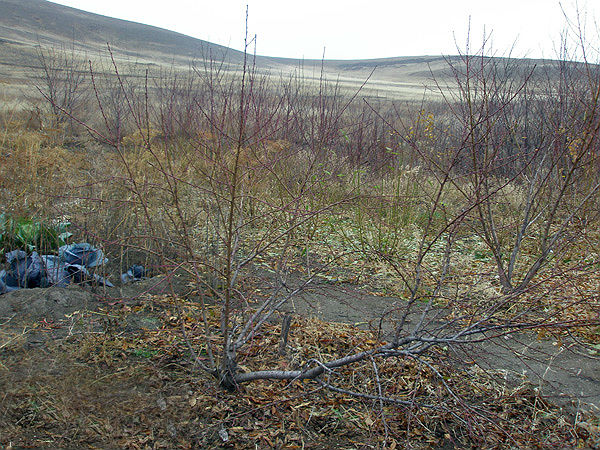
Photo 2. Appearance of a peach bush to shelter. We look, much better bend branches.
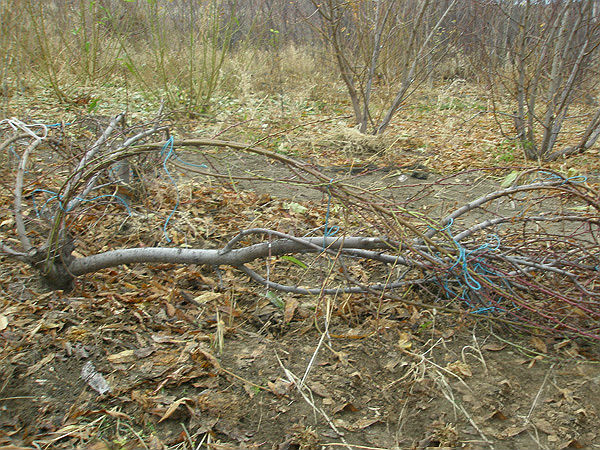
We score pegs and tie to them twine. Gently adjust the branches and tie them to the spicy of these twine (photo 3). So do it with all branches.
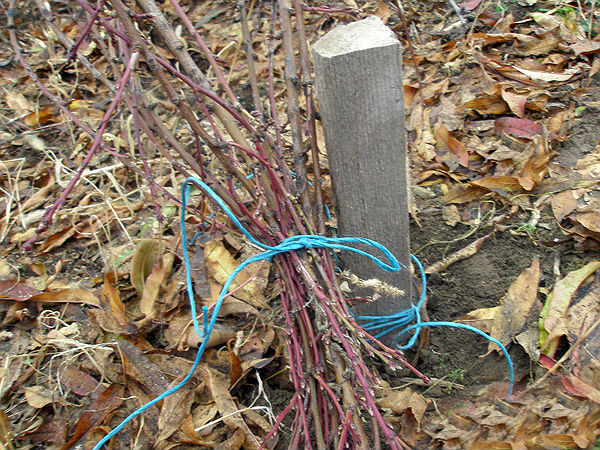
Small twigs need to be tied in a bundle so that when shelting does not break them (in photo 3). Photo 3. The naught branches tie the twine to the pegs.
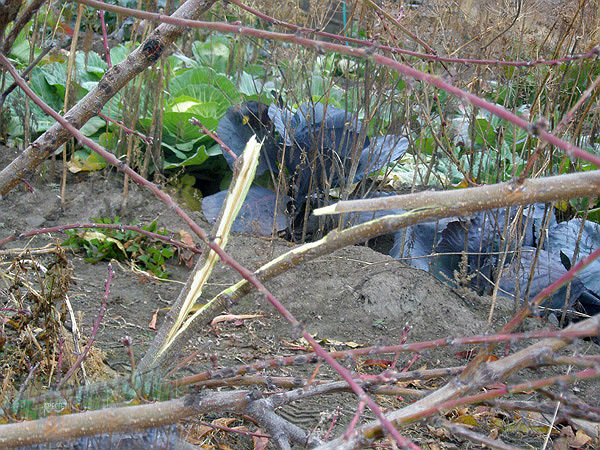 Old branches that cannot be sown, cut out. Also cut out and accidentally broken branches (photo 7). We leave the hemp 8-10 cm. All sections necessarily smear the Garden Warr.
Old branches that cannot be sown, cut out. Also cut out and accidentally broken branches (photo 7). We leave the hemp 8-10 cm. All sections necessarily smear the Garden Warr.
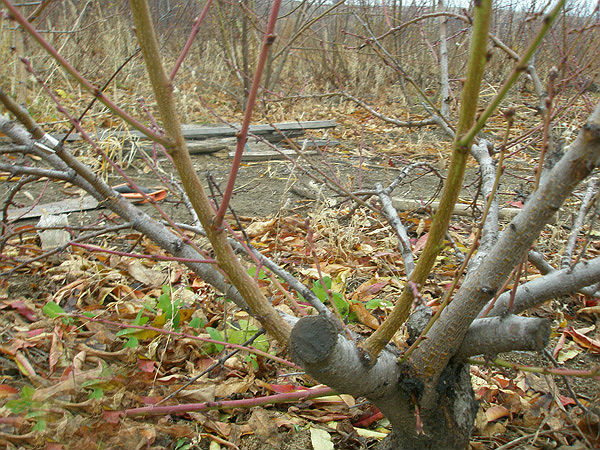 A year later, new, which will quickly enter fruiting (photo 8) will grow on the site of the carved branches. In fact, this is our method. Young shoots are more flexible, they are easier to hurt and hide.
A year later, new, which will quickly enter fruiting (photo 8) will grow on the site of the carved branches. In fact, this is our method. Young shoots are more flexible, they are easier to hurt and hide.
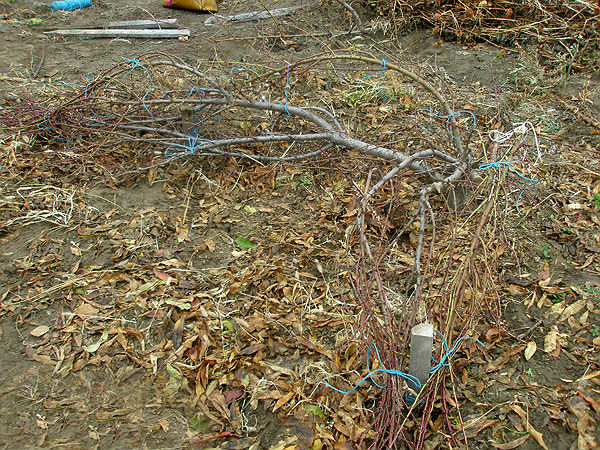 The final appearance of the naught bush is photo 4. In this form, the peach remains to resistant frosts, approximately to -10 C. We have in the hacasy, this end of November. Before the shelter in the base of the bush, it is necessary to put a means for scaring or destroying mice. Mice are very like to settle in dry "houses" and can eat a bark on our peach.
The final appearance of the naught bush is photo 4. In this form, the peach remains to resistant frosts, approximately to -10 C. We have in the hacasy, this end of November. Before the shelter in the base of the bush, it is necessary to put a means for scaring or destroying mice. Mice are very like to settle in dry "houses" and can eat a bark on our peach.
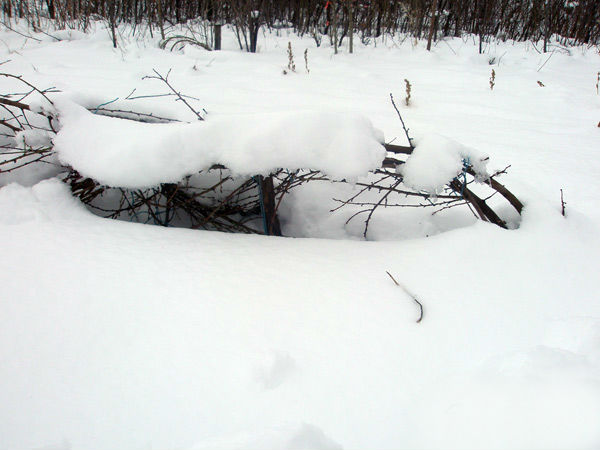 If the snow has already fell (photo 6), then we just fall asleep by the whole peach. Above the bush should be 20-25 cm. This is enough to peach perfectly perfectly.
If the snow has already fell (photo 6), then we just fall asleep by the whole peach. Above the bush should be 20-25 cm. This is enough to peach perfectly perfectly.
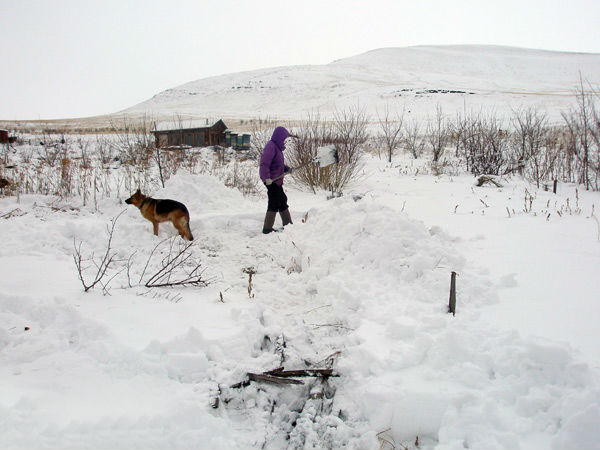 If there is no snow, then we make dry shelter. I smell dry slices in bags and cover the branches (photo 5). The root system of winter hardy and in shelter does not need.
If there is no snow, then we make dry shelter. I smell dry slices in bags and cover the branches (photo 5). The root system of winter hardy and in shelter does not need.
I described in detail a peach shelter technology in our farm. This method of shelter has been developed for many years, and it is more convenient for us to strengthen this way. You may have other options that you will arrange you.
It is possible to cover the peach with a dry barley, straw, with any dry bulk material, and on top to put a polyethylene film or rubberoid, so that during thaw or wet snow, our shelter is not wet.
Photo 5. Peaches, covered with dry sawdust bags
 Under the nonwoven material, peach during the winter dries up to the state of firewood, we had such a deplorable experience. If you decide to use non-woven material, then there should be an opaque shelter from above, otherwise the sun dries wood.
Under the nonwoven material, peach during the winter dries up to the state of firewood, we had such a deplorable experience. If you decide to use non-woven material, then there should be an opaque shelter from above, otherwise the sun dries wood.
There are still many shelter options for peach. You can put a large cardboard box on a bush and fill it with dry material. Some gardeners make whole houses from plywood, etc. In our middle strip of Russia, Peach is growing even in greenhouses together with grapes. There are many options, and everyone chooses its own. So you have a choice: plant or plant peach on your site.
Of course, we are not south, and troubles with peach can not be avoided. However, in our farm there are always buyers who want to acquire seedlings, bones and cuttings peach. At the end of the summer, when you see beautiful, major fruits (photo 1), it becomes clear why gardeners are solved on such an experiment.













 Start a discussion ...
Start a discussion ...